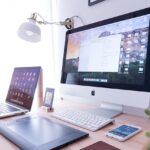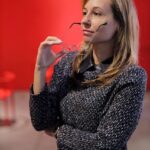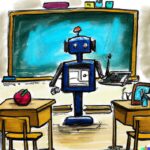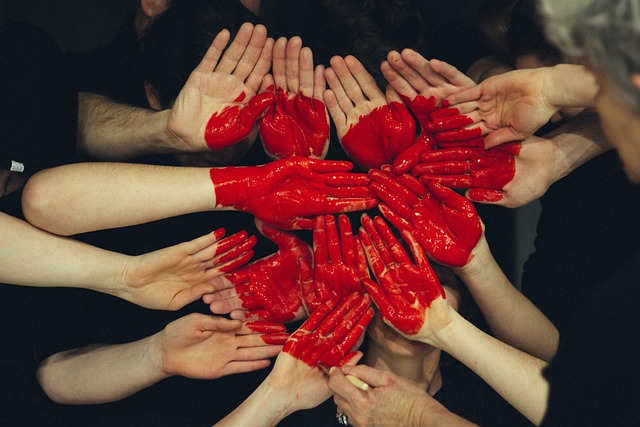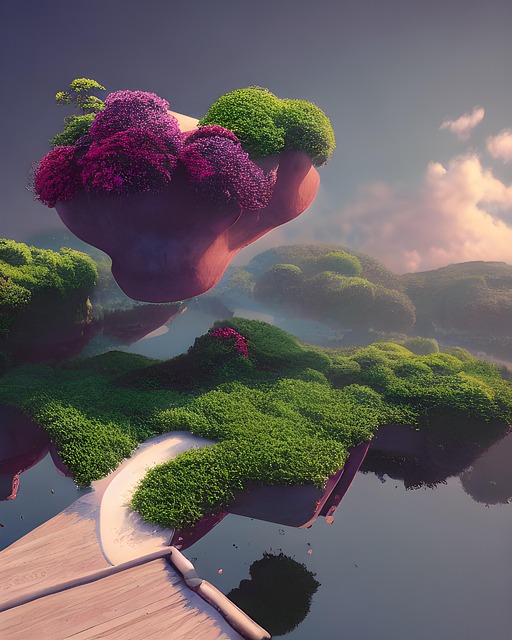# The New Frontier of AI Art: Exploring the Boundaries Between Technology and Human Expression
The intersection of artificial intelligence (AI) and art has emerged as a vibrant frontier in contemporary culture, challenging traditional notions of creativity and authorship. As AI technologies develop, they increasingly influence artistic practices, leading to a re-evaluation of what constitutes art and who can be deemed an artist. This article delves into the implications of AI in art, examining its capabilities, the philosophical questions it raises, and the potential for collaboration between humans and machines.
## The Capabilities of AI in Artistic Creation
Artificial intelligence has made significant strides in recent years, particularly in the realm of artistic creation. Algorithms trained on vast datasets of existing art can now generate images, music, and even poetry that mimic human creativity. Tools like OpenAI’s DALL-E and Google’s DeepDream exemplify how AI can produce visually stunning and complex artworks that often blur the lines between original creation and imitation.
One of the most fascinating aspects of AI-generated art is its ability to analyze and synthesize styles from various artistic movements. By learning from thousands of artworks, AI can create pieces that embody the characteristics of renowned artists, such as Van Gogh’s brushstrokes or Picasso’s geometric forms. This capability raises intriguing questions about originality and authenticity, as the line between human creativity and machine-generated output becomes increasingly ambiguous.
Moreover, AI can assist artists in the creative process rather than replace them. Programs like RunwayML and Artbreeder allow artists to experiment with different styles and techniques, offering new avenues for exploration. These tools enable creators to harness the computational power of AI, pushing the boundaries of their artistic expression. Consequently, AI serves not only as a medium but also as a collaborator, expanding the toolkit available to artists and fostering innovative approaches to creation.
## Philosophical Implications: Who is the Artist?
The rise of AI-generated art has sparked a philosophical debate about authorship and creativity. Traditionally, art has been viewed as a distinctly human endeavor—a reflection of individual experience, emotion, and intention. However, as machines begin to produce works that evoke similar emotional responses, the question arises: Can AI be considered an artist in its own right?
Many argue that true artistry requires consciousness, intent, and emotional depth—qualities that AI lacks. While machines can generate impressive works, they do so without understanding or experiencing the world as humans do. This perspective emphasizes the importance of human experience in the creative process, suggesting that AI can only serve as a tool rather than a true artist.
Conversely, some proponents of AI art contend that creativity can exist in various forms, regardless of the creator’s nature. They argue that if an AI can produce artworks that resonate with audiences, it should be recognized as a legitimate contributor to the artistic landscape. This viewpoint challenges the traditional definitions of art and artist, inviting a broader understanding of creativity that encompasses both human and machine-generated works.
As this discourse evolves, it becomes clear that the implications of AI in art extend beyond mere aesthetics. The questions surrounding authorship and creativity compel us to reflect on the nature of art itself and what it means to create. Such discussions are crucial as we navigate this new frontier, shaping our understanding of the relationship between technology and human expression.
## Collaborative Futures: Humans and AI in Artistic Practice
The future of art may lie in the collaborative relationship between humans and AI. By embracing the strengths of both, artists can explore new dimensions of creativity that were previously unattainable. The potential for collaboration opens up exciting possibilities, allowing artists to push the envelope of their work while maintaining their unique voice.
In recent years, numerous projects have exemplified this collaborative spirit. For instance, the artist Refik Anadol uses AI to create immersive installations that transform data into mesmerizing visual experiences. By combining his artistic vision with machine learning algorithms, Anadol crafts environments that engage viewers on multiple sensory levels, demonstrating the power of human-AI collaboration.
Additionally, collaborative platforms are emerging, enabling artists to work alongside AI in real-time. These platforms allow creators to input their ideas and receive AI-generated suggestions, fostering an iterative process that enhances the artistic journey. As artists experiment with these tools, they find new ways to express their concepts, leading to innovative outcomes that reflect both human and machine intelligence.
The implications of such collaborations extend beyond individual art-making practices. They challenge the notion of artistic ownership and invite a rethinking of the creative process itself. As artists and AI work together, they may redefine the boundaries of art, leading to a more inclusive understanding of creativity that encompasses diverse perspectives.
## Conclusion: Embracing the New Frontier
The emergence of AI in the art world represents a transformative moment in the relationship between technology and human expression. As AI continues to evolve, it challenges our understanding of creativity, authorship, and the role of the artist. Engaging with these questions is essential as we navigate the complexities of this new frontier.
While the capabilities of AI in artistic creation are impressive, they also prompt us to consider the deeper philosophical implications of machine-generated art. Recognizing the value of human experience in the creative process remains crucial, even as we explore the potential for collaboration between humans and machines.
Ultimately, the future of art may not be a competition between human and AI creators, but rather a partnership that enhances the artistic landscape. By embracing this collaboration, we can unlock new possibilities for expression and innovation, enriching our cultural tapestry in ways we have yet to imagine. As we stand at the threshold of this new frontier, the dialogue surrounding AI art will undoubtedly continue to evolve, shaping the future of creativity for generations to come.


